Death Certificate Samples
-

Death Transfer Certificate
download now -

Hospital Death Certificate
download now -

Church Death Certificate
download now -
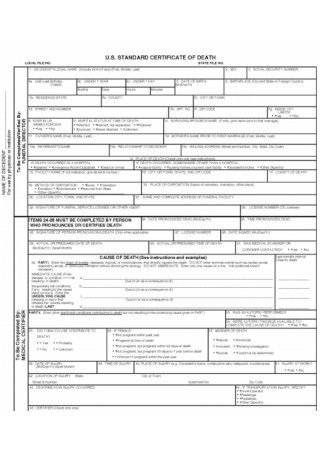
Death Certificate
download now -
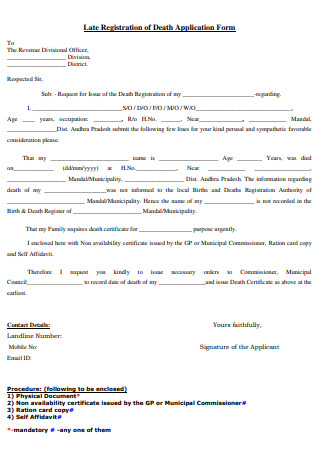
Late Registration of Death Application
download now -
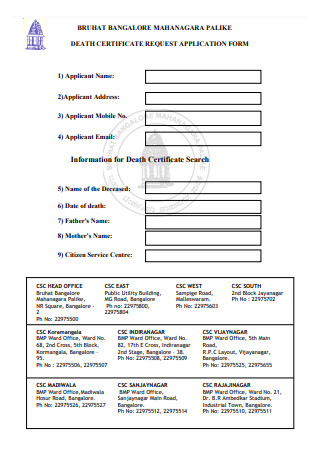
Death Certificate Request Application
download now -
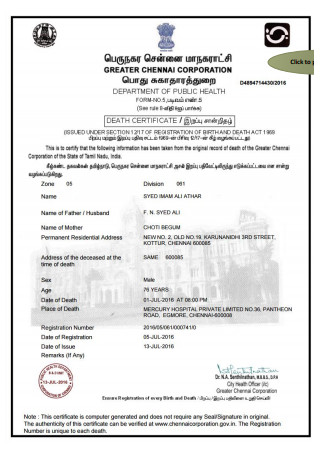
Printing of Death Certificate
download now -
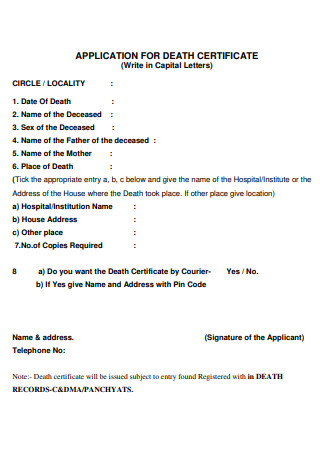
Application for Death Certificate
download now -
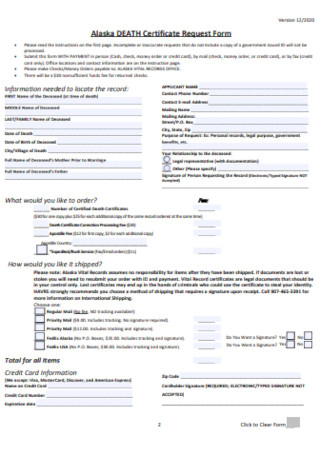
Death Certificate Request Form
download now -
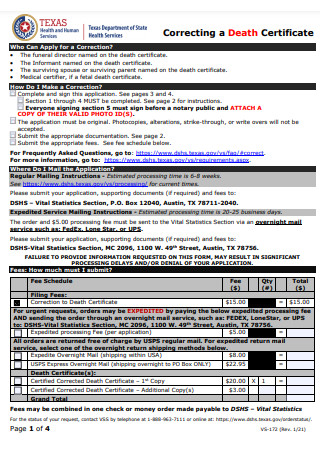
Death Certificate Correction
download now -

Death Certificate Template
download now -
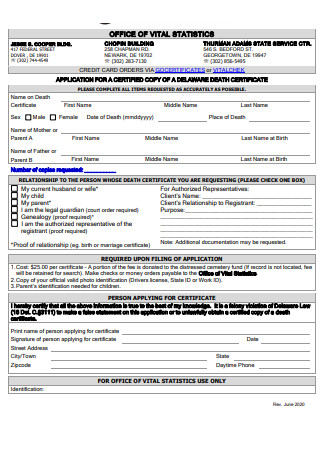
Application for Delaware Death Certificate
download now -
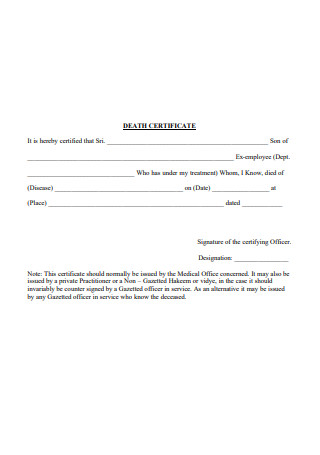
Printable Death Certificate
download now -
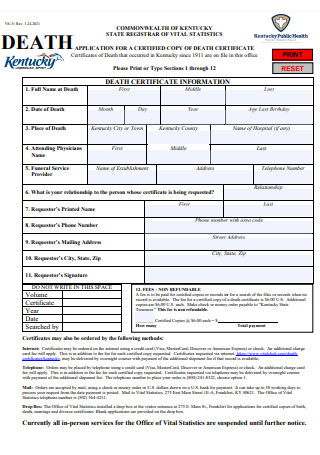
Sample Application for Death Certificate
download now -
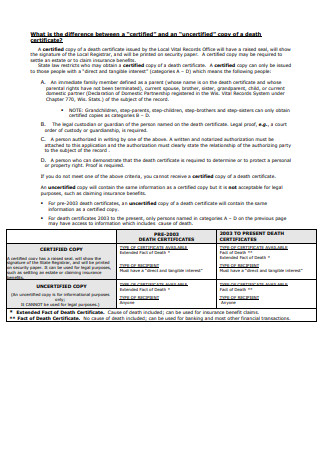
Death Criteria Template
download now -
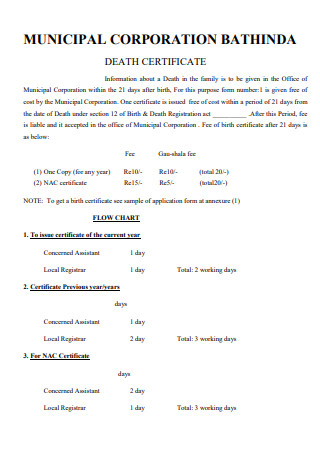
Muncipal Death Certificate
download now -
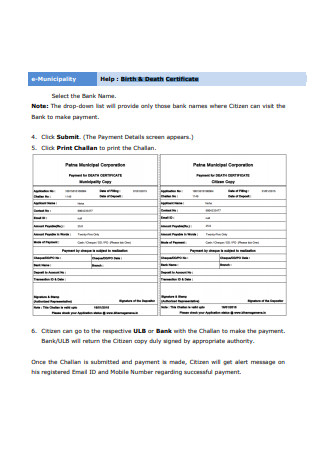
Birth & Death Certificate
download now -
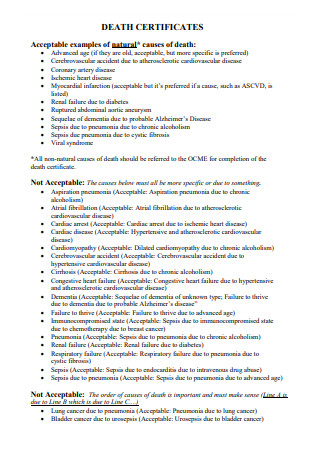
Application for a Death Certificate
download now -
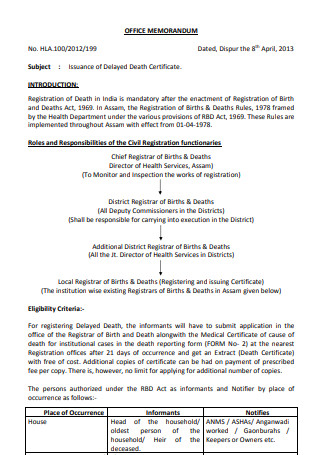
Delayed Death Certificate
download now -
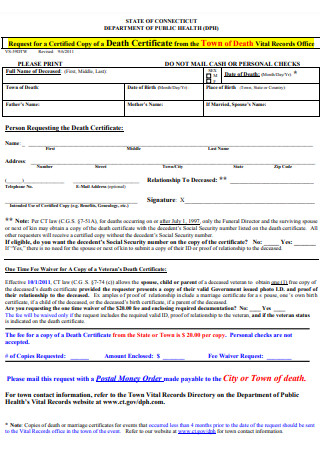
Death Certificate Request
download now -
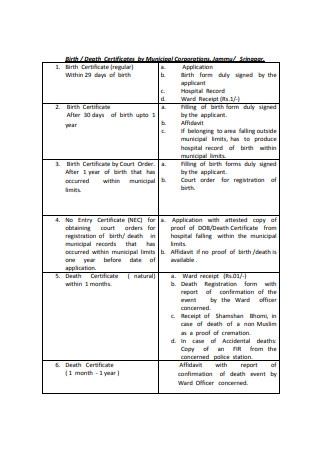
Birth / Death Certificate Checklist
download now -
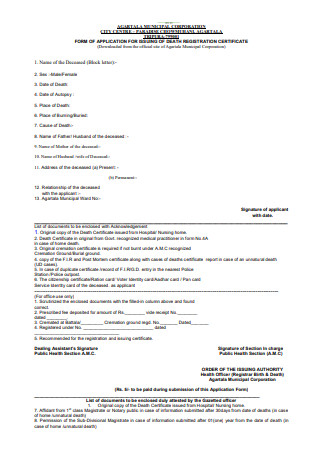
Death Form
download now
FREE Death Certificate s to Download
Death Certificate Format
Death Certificate Samples
What is a Death Certificate?
Purposes of a Death Certificate
Key Elements of a Death Certificate
How to Obtain a Death Certificate
FAQs
How long does it take to get a death certificate?
What details are included in a death certificate?
What documents are needed to apply for a death certificate?
What should I do if details on the death certificate are incorrect?
How does a death certificate impact inheritance claims?

Download Death Certificate Bundle
Death Certificate Format
- Personal Details of the Deceased:
- Full Name
- Gender
- Date and Place of Birth
- Age at the Time of Death
- Marital Status
- Occupation
- Residential Address
- Details of Death:
- Date and Time of Death
- Place of Death (e.g., hospital, residence)
- Cause of Death (as certified by a medical practitioner)
- Duration of Illness (if applicable)
- Informant’s Details:
- Name and Relationship to the Deceased
- Address
- Signature or Thumb Impression
- Registrar’s Details:
- Name and Signature of the Registrar
- Date of Registration
- Registration Number
Procedure to Obtain a Death Certificate:
- Registration of Death:
- The death must be reported to the local Registrar within 21 days. This can be done by the head of the family, a close relative, or, in the case of institutional deaths, by the hospital authorities.
- Submission of Required Documents:
- Proof of death (e.g., medical certificate of cause of death)
- Proof of identity and address of the deceased
- Application form for the death certificate
- Verification Process:
- The Registrar verifies the details provided. If the death is registered within the stipulated 21 days, the certificate is issued promptly. For delayed registrations, additional procedures and penalties may apply.
- Issuance of Death Certificate:
- Upon successful registration and verification, the Death Certificate is issued, typically within a few days.
Sample Death Certificate Format:
While the exact format may vary slightly between states, a standard Death Certificate includes the following sections:
- Header:
- Government Emblem
- Title: “Death Certificate”
- Body:
- Personal Details of the Deceased
- Details of Death
- Informant’s Details
- Registrar’s Details
- Footer:
- Official Seal
- Date of Issue
What is a Death Certificate?
A death certificate is an official legal document that verifies the death of a person. Issued by a relevant government or municipal authority, it serves as proof of death for legal and administrative purposes. This document records the deceased’s personal details, cause of death, and other relevant data, ensuring that proper legal protocols are followed.
Death certificates are indispensable for many processes, such as transferring property, claiming insurance benefits, and registering the death in official records. They also help governments maintain accurate demographic data. You can also see more on Affidavit of Funeral Expenses.
Purposes of a Death Certificate
- Legal Proof: Acts as official evidence of death for settling legal matters like property distribution and tax obligations.
- Insurance Claims: Required for beneficiaries to claim life insurance or other death-related policies.
- Banking and Financial Tasks: Essential for closing bank accounts, accessing funds, or handling investments.
- Government Benefits: Used for claiming pensions or other government-related benefits.
- Medical and Statistical Use: Helps in recording cause-specific mortality for research and public health strategies. You can also see more on Certificate of Completion.
Key Elements of a Death Certificate

1. Personal Information of the Deceased
The death certificate includes the full name of the deceased, along with any aliases or maiden names they may have used. Additional details, such as the date and place of birth, gender, marital status, and nationality, are also recorded. In some cases, a unique identification number, like a social security number, may be required to verify identity.
2. Details of Death
This section captures the specifics of the death. It includes the date and time when the death occurred, as well as the exact location, whether it was in a hospital, at home, or in a public place. The primary cause of death is recorded along with contributing factors, and the manner of death is identified, such as whether it was natural, accidental, or due to other circumstances. You can also see more on Certificate of Achievement.
3. Family and Next-of-Kin Information
The certificate documents details about the deceased’s family, including the name of their spouse if applicable. It also lists the names of their parents and may include information about the next of kin or the individual responsible for reporting the death.
4. Certifying Authority Information
The certifying physician or medical examiner’s details are included in this section. It requires their name, signature, and sometimes their professional license number. The date when the certification was completed is also noted, along with the name and details of the issuing authority, such as a government or local registrar office.
5. Registration Details
Every death certificate includes a unique certificate number and the date of registration. It is authenticated with an official stamp or seal from the issuing authority to confirm its validity and legal standing. You can also see more on Certificate Of Employment.
6. Additional Information
Optional details may include the deceased’s occupation and employment information, as well as the location of burial or cremation. In some cases, the name and contact details of the funeral director are also provided.
How to Obtain a Death Certificate

Step 1: Identify the Authority
Visit the relevant government office, such as the registrar’s office or municipal corporation, in the jurisdiction where the death occurred. Online portals may also be available in some areas. You can also see more on Certificate of Conformance.
Step 2: Gather Required Documents
Collect essential documents, such as the deceased’s ID, hospital death report, and proof of relationship. Ensure you meet the specific document requirements for your region.
Step 3: Submit the Application
Complete the application form accurately, providing details like the deceased’s name, date of death, and place of death. Submit this sample form along with the required documents to the concerned authority.
Step 4: Pay Applicable Fees
Pay the processing fee as per the authority’s guidelines. Keep the receipt for tracking the status of your application.
Step 5: Receive the Death Certificate
Once the application is processed, you will receive the death certificate either in-person or through mail. Digital copies may also be available for download. You can also see more on Birth Certificate.
A death certificate is more than just a legal formality; it plays a crucial role in ensuring the smooth handling of personal, legal, and financial matters after death. It serves as an essential document for individuals and governments alike, enabling demographic records and offering closure to families. Understanding the process and importance of a death certificate can ease the complexities of managing post-death formalities, ensuring a dignified and lawful transition. You can also see more on Award Certificates.
FAQs
How long does it take to get a death certificate?
The processing time varies by jurisdiction, but it typically takes 2–10 business days after submitting the application and required documents.
What details are included in a death certificate?
A death certificate contains the deceased’s name, date of birth, date and place of death, cause of death, and personal identifiers such as a social security number. Additional information, like the deceased’s occupation or marital status, may also be included depending on the jurisdiction. You can also see more on Dog Birth Certificate.
What documents are needed to apply for a death certificate?
Typically, you need the deceased’s identity proof, a medical report certifying the death, a completed application form, and proof of relationship. Some regions may ask for additional documents like hospital discharge forms.
What should I do if details on the death certificate are incorrect?
You can request corrections by contacting the issuing authority. This usually involves submitting an application for amendment along with supporting documents that verify the correct details. You can also see more on Pet Birth Certificate.
How does a death certificate impact inheritance claims?
A death certificate is a crucial document for initiating probate or inheritance claims. It ensures rightful heirs can access the deceased’s assets and properties lawfully, as it acts as legal proof of death.
